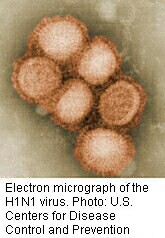
TUESDAY, Jan. 24 (HealthDay News) — Only about one in five American adults aged 36 to 39 got a flu shot during the H1N1 swine flu epidemic of 2009-2010, even though about 65 percent were at least moderately concerned about the disease and nearly 60 percent claimed to follow the issue moderately or very closely.
That’s the finding of a University of Michigan report detailing how this age group monitored the epidemic and what they did to protect themselves and their families.
The analysis of data collected from almost 3,000 young adults during the outbreak also showed that those with young children at home were most concerned and most likely to follow the news about the epidemic.
Overall, young adults were most likely to get information about the epidemic from friends, co-workers and family members. But their most-trusted sources of information were doctors, followed by the U.S. National Institutes of Health, pharmacists at local drug stores, and nurses from county health departments.
YouTube videos, drug company commercials and Wikipedia articles were the least-trusted sources.
The findings appear in “The Generation X Report.” Generation X refers to people born between the early 1960s and the early 1980s.
“These results suggest that young adults in Generation X did reasonably well in their first encounter with a major epidemic,” report author Jon D. Miller said in a university news release. “Those with minor children at home were at the greatest risk, and they responded accordingly, with higher levels of awareness and concern.”
Analyzing how members of Generation X reacted to the swine flu epidemic may help public health officials deal more effectively with future epidemics, according to Miller, director of the Longitudinal Study of American Youth at the U-M Institute for Social Research.
“In the decades ahead, the young adults in Generation X will encounter numerous other crises — some biomedical, some environmental and others yet to be imagined,” Miller said. “They will have to acquire, organize and make sense of emerging scientific and technical information, and the experience of coping with the swine flu epidemic suggests how they will meet that challenge.”
More information
The U.S. Department of Health and Human Services has more about H1N1 swine flu.

